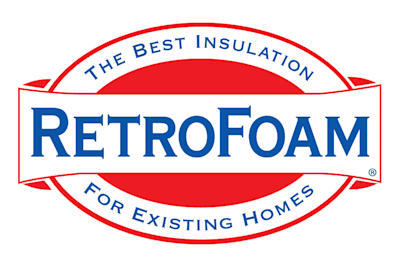Vented vs. Unvented Attics: How to Control Humidity in a Sealed, Conditioned Space


When you insulate your attic with spray foam, you’re creating a sealed, conditioned space, and that’s great for energy efficiency and comfort.
But here’s the twist: even if your attic is sealed tight, humidity can still sneak in. And if that moisture isn’t managed, it can lead to condensation, mildew, mold growth, and even structural wood damage.
Let’s break down what you need to know about vented vs. unvented attics, why humidity still matters in a sealed attic, and how to keep your conditioned attic with spray foam healthy and dry.
Vented Attic vs. Unvented Attic: What's the Difference?
Vented attics rely on natural airflow to remove heat and moisture.
Ridge and soffit vents pull air through the attic space to keep it cooler and drier.
Unvented or sealed attics are insulated along the roof deck (not the attic floor) with materials like spray foam. This approach eliminates the need for traditional attic ventilation and brings the attic inside your home’s thermal envelope, making it part of your conditioned living space.
Key difference:
- Vented attic = open to outdoor air and relies on passive ventilation
- Unvented attic = closed to outdoor air and relies on controlled indoor air movement
Why Humidity Control Matters in a Sealed Attic
Even though an unventilated attic is sealed, humidity can still build up, and trapped moisture is bad news.
High humidity can cause:
- Condensation on cold surfaces
- Mold and mildew growth
- Rust on stored tools or other metal items
- Rot or warping in wooden roof framing
Because your sealed attic is now part of your conditioned living space, you may be using it for storage or even converting it to living space, which means you need to treat it like any other room in your home.
How Humidity Gets into an Unvented Attic
You might be wondering, “If it’s sealed, how does moisture even get in there?”
There are a few sneaky ways:
- Air leaks from the rest of the house – If the rest of your home isn’t fully air sealed, conditioned air may never reach the attic, while humid outdoor air leaks in.
- Improperly vented bathroom fans or stove vents – These should always vent outside, but sometimes they are vented to dump hot, moist air straight into the attic.
- Air leaks – When warm air meets cold air, condensation forms, and that moisture circulates right up into the attic. This can happen during the summer when hot outdoor air meets cooler indoor air or in the winter when the frigid outdoor air leaks in to meet your warmer conditioned air.
Bottom line: even though your attic is sealed, the rest of your home’s air movement can still impact it.
Signs of Humidity Problems in a Conditioned Attic
It’s smart to check your attic seasonally, so here’s what to look out for.
- A musty smell
- Condensation on surfaces
- Rusty tools or metal items
- Visible mold or mildew
- Humidity above 50 percent (you can measure this with a hygrometer or smart thermostat)
The ideal humidity level inside your home and your conditioned attic should be between 30 and 50 percent. Below that, the air feels uncomfortably dry. Above that, it starts feeling sticky, and mold can grow.
How to Control Humidity in an Unvented Attic
Now for the good news: there are a few straightforward ways to keep your attic insulation ventilation under control in a sealed attic.
Air Seal Your Entire Building Envelope
Spray foam insulation is great for this because it creates an air seal.
Keeping humid outdoor air out and conditioned air in helps your HVAC system move air all the way up into your attic.
Add HVAC Supply and Return Vents in the Attic
Treat your conditioned attic with spray foam like any other room by adding HVAC supply and return vents.
This circulates air and helps keep humidity stable.
Use a Fan with a Humidity Sensor
Install a fan designed to activate when it detects humidity.
This ensures air is always moving when moisture levels climb.
Monitor Humidity with a Hygrometer
A simple hygrometer helps you spot trouble early so you can act fast.
Consider a Dehumidifier for Spray Foam Attics
If humidity issues persist, a dedicated dehumidifier can help maintain ideal levels without overworking your HVAC system.
What to Do if You Already See Moisture Problems
If you see visible condensation, mildew, or mold growth in your attic after installing spray foam insulation, address it right away to prevent long-term damage.
That might include drying the area, increasing airflow, sealing remaining leaks, or contacting a professional to assess the situation.
Managing humidity is just as important as adding insulation when it comes to creating a healthy, energy-efficient home.
Want to dive deeper? Visit our Learning Center for more articles, resources, and videos all about building science and foam insulation.
Key Points:
- Vented attics rely on passive airflow; unvented attics are sealed and part of your conditioned space.
- Even sealed attics can develop humidity issues from air leaks, vented fans, or seasonal condensation.
- Keep attic humidity between 30 and 50 percent to avoid mold, mildew, and wood damage.
- Manage humidity by air sealing, adding HVAC vents, installing humidity-sensing fans, and using a hygrometer.
- Consider a dehumidifier for spray foam attics if humidity stays high.
Related Articles
Do You Need Attic Ventilation with Spray Foam Insulation?
Ideal Indoor Humidity: How to Maintain the Perfect Balance in Your Home
How to Insulate a Finished Attic with Foam
FAQs About Vented vs. Unvented Attics
Do you need attic ventilation with spray foam insulation?
No, when you insulate the roof deck with spray foam, you’re creating an unvented attic (also called a sealed or conditioned attic). Traditional venting is no longer needed because the attic is now part of your home’s conditioned space. Instead of vents, you should focus on air movement with HVAC supply and return vents, fans, or a dehumidifier to control humidity.
What's the difference between a vented attic and an unvented attic?
A vented attic uses ridge and soffit vents to allow outside air to flow through the space. An unvented attic is sealed and insulated along the roof deck with spray foam, keeping outside air out and conditioned indoor air in. This makes the attic part of the home’s thermal envelope.
Why would I choose an unvented attic over a vented attic?
Unvented attics offer several benefits, including:
- Reduced heat transfer through the roof
- Lower risk of ice dams
- Fewer drafts and air leaks
- Better protection for ductwork located in the attic
They also help improve overall comfort and energy efficiency, especially in homes where HVAC systems run through the attic space.
How do I know if my unvented attic has a humidity problem?
Check for these warning signs:
- A musty smell
- Condensation on surfaces
- Rusty tools or other metal items
- Visible mold or mildew
- Humidity levels above 50 percent
How do I control humidity in a sealed attic?
Try these steps:
- Fully air seal your home’s building envelope
- Add HVAC supply and return vents in the attic
- Install a humidity-sensing fan to move air when moisture builds up
- Use a hygrometer to monitor conditions
- Consider a dehumidifier for spray foam attics if moisture persists
About Amanda Emery
Amanda previously has worked as a breaking news and crime reporter, TV news producer, and editor. As a journalist, she has won several awards from The Society of Professional Journalists - Detroit Chapter and the Michigan Press Association. Amanda uses her experience as a journalist to write content that will help educate homeowners on foam insulation benefits. When Amanda isn’t writing, she’s spending time with her husband Chris, daughter Lilith-Maeve, and rescued huskies Danger and Wendigo. She also loves knitting, making art, and cooking.



